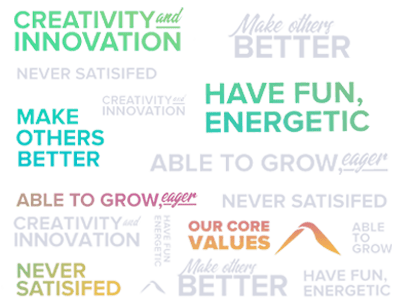Introduction:
Utility companies have functioned in a steady setting for a long time. Choices for customers were limited, communication was only done, when necessary, the association was purely related to service delivery and payment, including paying bills, raising complaints in case of outages, and occasional calls for assistance. However, this transactional relationship has passed. However, relentless challenge that is being faced by the utility sector in the UK amid a dynamic landscape of competition and regulation is maintaining a consistent, seamless customer experience across channels.
Also, with the rise of digitization and instant deliveries, where customers are accustomed to getting things done in one click, their expectations are higher than ever. However, there are a lot of utility providers who are still treating customers in the same obsolete manner.
According to the UK Customer Satisfaction Index (UKCSI) data presented by the bfy Group in its article, UKCSI shows Utilities must bridge customer satisfaction gap 31% of customers in UK across all sectors are willing to pay more to receive excellent service
High time for revolution:
Omnichannel engagement and seamless customer journeys are not just add-ons for a company- they are vital elements to remain relevant, drive loyalty, and nurture long-term relationships.
The Changing Appearance of the Utility Customer
Utility customers today are tech-savvy and intolerant of friction. Prompt action is expected no matter which service is involved, whether it’s reporting an outage or checking the bill. Also, customers want to reach out to the company through their preferred mode of channels, which could be message, mail, social media, or chatbot
With robust omnichannel strategies, companies retain an average of 89% of their customers, corresponding to 33% for companies with feeble omnichannel strategies
What Is an Omnichannel Experience-And Why Should Utilities Care?
Consumers in the UK have become aware of their requirements and expectations. They know what they want and how they want, and they don’t want to repeat things again.
Omnichannel means delivering a unified experience to the customer. This is done by integrating the communication channels through which a customer contacts a company. However, it doesn’t mean just being available on all channels; it signifies integration in such a way that it makes the customer journey seamless and consistent.
In utilities, this might look like:
- An SMS of an outage alert is delivered to the customer. In order to check the real-time map, the customer clicks the link given in the message.
- Availability of a virtual assistant to reply to follow-up questions.
- In case of escalation, a human agent handles the conversation who is already well versed with the issue, so that the customer doesn’t have to repeat the issue.
- Sending tailored emails and messages after restoration of service
As per the Salesforce research data in which 14,300 consumers and business buyers were surveyed globally- What Are Customer Expectations, and How Have They Changed? – A consistent interaction across departments is anticipated by 79% of customers.
Why Omnichannel matters now more than ever
Gone are the days when utilities functioned with a monopolistic approach. The sector has come under pressure to offer great service with the onset of deregulation, the adoption of green energy, and increasing customer expectation.
How an omnichannel strategy can influence your bottom line:
When the customer journey is smooth and consistent, complaints and escalations drop, this leads to high CSAT, NPS and enhanced loyalty.
As per Market research by the Institute of Customer Service data on UK utility companies, in January 2025, the Customer Satisfaction Index scored the Utilities sector at 70 out of 100
- Reduced Operational Costs
Inbound calls and expensive service escalations are decreased when customers are satisfied and replied well during the first call itself.
- Impactful data for decision making
Unified data is achieved by a connected journey; this data assists in delivering tailored experiences, predicting requirements, and proactively identifying churn signals.
- Better Engagement & Loyalty
Customers feel acknowledged and valued when personalised and proactive communication is done, and they are not t just a connection number.
- Assistance with Energy Transition
With awareness around green energy, it’s important to guide customers regarding EV charging and solar integration. This can be done proactively across channels.
Being on the front foot:
Sending a message to a customer via a mobile app when he/she receives a high-bill alert due to increased usage. So, instead of waiting for the user to respond with a complaint, reach out and send a link with an explanatory usage breakdown, tips to reduce consumption, and offer options for flexible billing plans.
So what’s stopping the Utility sector?
Like every new movement, the shift to omnichannel is also not free from challenges. The traditional systems, obsolete CRM and departmental silos can make the transition difficult. However, these hurdles can no longer be used as excuses.
Omnichannel transition has been made a smooth journey with the growth of cloud-native platforms, AI-powered automation, and customer data platforms (CDPs).
The question is: When will you take the plunge?
The key movements for the big steps-
- Review Your Customer Journey: Recognise pain points, and detached touchpoints.
- Breakdown Silos: Data and operations integration across the board, i.e., customer service, field operation teams, and digital.
- Capitalising on the Right Tools: Tools that assist in transposition and real-time personalization across channels should be selected.
Conclusion:
Movement to Omnichannel for the UK utility sector requires more than just incremental improvements; it requires a strategic focus on quality service. By focussing on meaningful, seamless communications, utilities can shape profounder connections with their customers, nurture brand loyalty, and promote stable business growth. Going omnichannel should ensure that every touch-point is making customer journey consistent and hassle free, turning everyday interactions into opportunities for trust and long-term success.
Omnichannel and seamless customer journeys are major requirements in today’s business setup. In order to stay relevant and successful, the customer engagement method should be more inclusive and interlinked. The reason being-
- Transformation in customers’ expectations
- Digital first is the new normal.
- Integration is augmenting Operational Competence.
- Insights from data for tailored experience
- An approach with transparency
Frequently Asked Questions on Omnichannel Customer Journey in the Utility Sector
1. What does it mean by an omnichannel customer journey with regard to the Utility sector?
An omnichannel customer journey means delivering a seamless and integrated experience across all customer touchpoints, such as mobile, website, email, message, and in-person.
2. What challenges can be faced by the Utility sector in the implementation of omnichannel strategies?
Some of the challenges that can be faced by the Utility sector in the implementation of omnichannel strategies are:
- Siloed data
- Legacy IT setup
- Budget constraints
- Regulatory intricacies
3. Can we say that omnichannel is all about technology?
No! While technology is a critical element, a thriving omnichannel strategy also requires efficient coordination of customer-centric design and a robust focus on user experience. It is indeed about platforms and tools, but thought process and strategy also play a major role.
4. What is the relevance of omnichannel for the UK utility sector?
Customers now do not differentiate between sectors in terms of experience; they expect the same level of service from utilities as from retail, banking, or healthcare companies. Omnichannel strategies deliver a consistent and seamless experience across all channels, enhancing satisfaction, reducing churn, and minimizing customer frustration.
Sources :
UKCSI shows Utilities must bridge customer satisfaction gap
25 Amazing Omnichannel Marketing Statistics Every Marketer Should Know
What Are Customer Expectations, and How Have They Changed?
The UK Customer Satisfaction Index




